Aircraft
Mitsubishi A6M2a Zero Type 11
Pilot & Markings
Lieutenant Saburo Sakai — 12th Flying Group, 1941
Scale & Kit
1/48 Scale Hasegawa Model
History
The legendary Zero Fighter was without doubt, the most renowned Japanese aircraft of WWII. It was fast, maneuverable and flown by highly skilled pilots. The Zero was used as a land and carrier based fighter, fighter-bomber, and finally as a suicide bomber. Its incredible speed and turning radius ruled the Pacific skies during the early 1940’s. Although few of these highly skilled pilots survived the war, many of them reached the ace status.
Among these surviving aces, was Lieutenant Saburo Sakai. Sakai claimed he had shot down 64 aircraft, including at least one of each type flown by United States pilots. But, the Japanese military did not credit individual pilots with victory claims. Instead they gave credit to the squadron as a whole. Most historians estimate that Sakai shot down something in the vicinity of 60-64 enemy aircraft.
Because of its incredible range, Sakai loved to pilot the Mitsubishi Zero. Pilots of this era felt much confidence knowing there was plenty of fuel in the aircraft. Sakai once quoted: “When you know you’ve got plenty of gas, it really lets you relax. It affects what you do with your plane, even how you fight. I once flew a Zero for 12 hours continuous in an experiment to see just how far it could go. That plane’s range was incredible.”
The flight deck was built to the markings of the aircraft carrier ship Akagi to which Saburo Sakai was assigned. Fortunately, he was not aboard when the ship was sunk by the Americans on June 4, 1942 while operating north of Midway Island. It was attacked by dive bombers from the aircraft carrier USS Enterprise and set on fire.
The Hasegawa 1/48 scale airplane model kit with Sakai’s decals was used to produce this aircraft. I also used Cutting Edge 1/48 A6M2 Zeke Super Detailed Cockpit together with Cutting Edge control surfaces. Building the cockpit was a great experience, it was fitted seamlessly to the fuselage halves and there was hardly any sanding required. This cockpit has tremendous detail, including seat belts, instrumental panel, seat support, console, brake pedals, crank handle, radio, gun butts, beer bottles, sake and coffee. The gun sight was created by carefully carving a thin transparent piece of plastic. Several areas of the model had to be carved, sanded and modified where the ailerons, elevators and rudder exist in order to fit aftermarket control surfaces. Needless to say, this was a bit of a challenge.
Although the general perception is that the Zero was pure white, in reality, it was a very faint grey. For this, I mixed Flat White with IJN Light Grey to produce the correct colour for Sakai’s aircraft. The blue band was airbrushed using a masked area. Panel lines were pre-shaded before applying any paint in order to achieve the ‘worn out’ look. Hydraulic brake lines were installed to the landing gear. To create this, I had to purchase thin brass wire, measure the correct length, make holes on the gear with a pin vise, paint the wire Semi Gloss Black and install it in an extremely tedious manner.
I used Just Plane Stuff’s Japanese WWII Flight Deck to produce this replica of the famous IJN Akagi aircraft carrier. Since most Japanese flight decks of the era were made of wood, imitating this material with a colour scheme was another challenge. For this I used Tamiya XF-57 Buff with a tint of XF-10 Flat Brown. The results were perfect! On the Akagi carrier, there was a Red Hinomaru located close to the back of the deck. In order to paint a portion of this symbol, I masked off areas on the edge of the deck and used Tamiya XF-7 Red to paint the Hinomaru. There was also a solid white centreline which was created by masking off an area and painting it using Tamiya XF-2 White.
This was my first attempt at creating an aircraft carrier flight deck. This project was a challenging, but very enjoyable experience. Enjoy the photographs.
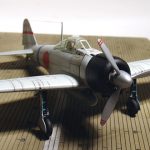
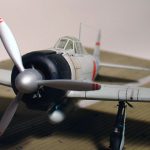
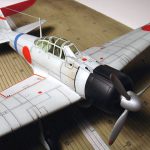
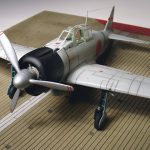
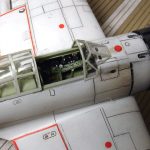
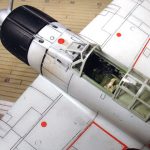
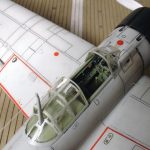
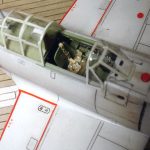
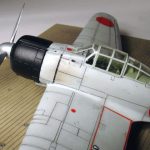
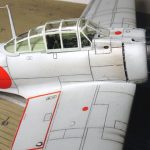
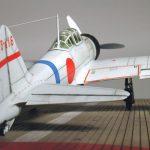
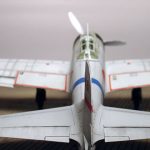
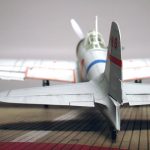
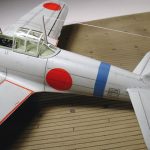
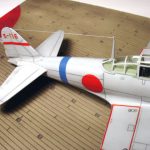
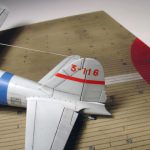
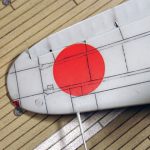
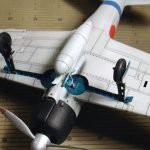
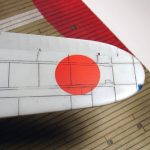
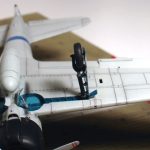
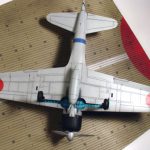
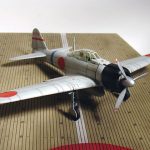
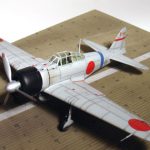
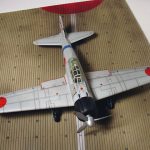
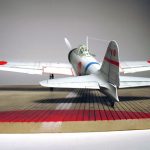
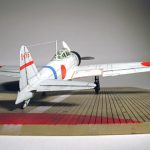
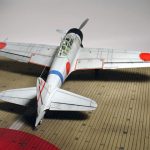
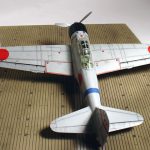
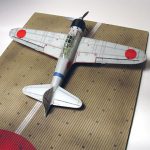
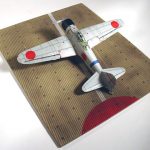
Leave a Reply